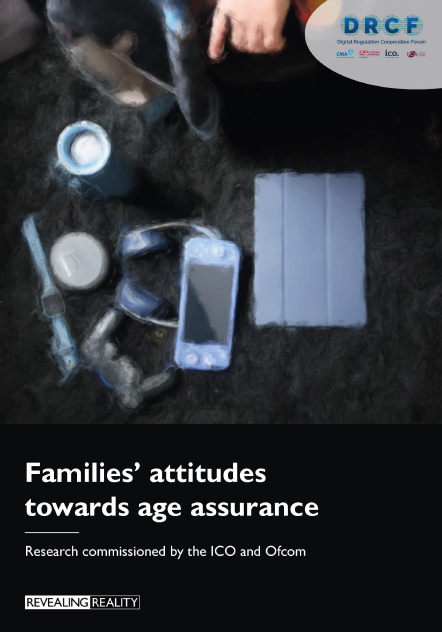It’s no secret that many children find ways to get around age assurance methods – often in the form of the age self-declaration that pops up when signing up for social media or a new video game. In fact, parents sometimes help their children get around these measures, making research all the more critical to understand which age assurance methods should be ramped up and whether or not they will be effective.
Revealing Reality was commissioned by Ofcom and the ICO to explore how families think about different age assurance methods, how they use them, and how they could work going forward.
The research will inform Ofcom’s preparations for implementing the new online safety laws and the ICO’s regulation of the Children’s Code.
This research drew on in-depth qualitative interviews with 18 families to explore the context of age assurance and how five of these methods might fit into daily life. An additional four focus groups with parents and four focus groups with children were conducted to explore how age assurance methods could work when presented with the benefits and trade-offs other families could encounter.
Wants don’t always line up with actual behaviour
Strikingly, what parents said they wanted was often at odds with what they actually did or decided amid the realities of daily family life. Often parents liked the concept of age assurance as a way to keep their child from seeing inappropriate content online or being contacted by adult strangers, but they still wanted to feel in control and have the flexibility to make their own decisions for their child.
This tension fed into a broader concern parents had of a parenting ‘cliff edge’: their child reaching an age when suddenly everything was allowed. Instead, parents often wanted to allow their child the room to grow, make decisions, and experience online spaces gradually in the same way some parents would give children pocket money so they can learn to save and spend before they have an income.
Self-declaration of age feels tokenistic
Some children brought up that the very design of age assurance methods, particularly on social media platforms, makes it harder to select the right age. With many self-declaration pop-ups, date of birth comes up as a long, strolling list of dates where simply swiping and picking at random is quicker and easier than finding a specific date.
Features like this made parents feel self-declaration was just another tick-box exercise for platforms to say they were doing their part to keep children safe online. There instead needs to be a balance between building in enough friction to keep children from easily circumventing age assurance methods and ease of use for parents.
Children get more tech savvy with age and parents don’t know how to (or don’t want to) keep up
As children get older their ability and motivation to get around age assurance methods and parental controls increase, while parents’ ability and motivation to stop them decreases. Because of this dynamic, parents frequently had to weigh the benefits of maintaining a good relationship with their child against wanting to keep them safe, leading to some parents using devices or other parental controls to keep track of what their children were doing online.
On the other hand, some parents didn’t put measures in place for online platforms and devices until either their own child experienced something negative or they heard about another child’s negative experience – encountering sexual or violent content, being contacted by adult strangers, spending a lot of money, etc. Once parents saw the risks of online platforms and devices, they often changed their perspective and behaviour towards their child’s online access.
Bringing the voices of parents and children into age assurance is at the centre of this research and has highlighted the need for families to understand why age assurance exists and what the risks of circumventing it are if these methods are going to work effectively.

